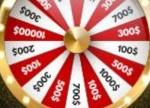Will Lebron James Save Cleveland From Economic Decline? Sort Of.
Posted: December 17, 2014
Updated: December 17, 2014

Cleveland is down, but not quite out. Can Lebron James bring it back from the precipice?
Cleveland epitomizes the term “Rust Belt.” Perched on the shores of polluted Lake Eerie, Ohio’s largest city was once a major manufacturing a shipping hub, a key cog in the American industrial machine that spanned from Northern Minnesota to Upstate New York.
When the region’s fortunes sunk, Cleveland sunk along with it. By the end of the 20th century most of America’s industry had become obsolete or moved to cheaper locations overseas, and the aptly-named Rust Belt is now dotted with fading hulks reminiscing on the country’s midcentury glory, cities where crime and unemployment rates seem to be the only the things on the rise.
Online sportsbooks in the US expect the Cavaliers to win the 2015 NBA Finals
LeRoy Brooks predicts the Lebron Effect to help Cleveland’s economy grow by $500 million
Lebron’s $20.6 million pales in comparison to his economic value
Cleveland is emblematic of that sad urban blight we call “deindustrialization.” At the peak of the postwar economic boom in the 1950s, “The Rock and Roll Capital of the World” was America’s sixth-largest city. It is now the 28th. The city’s unemployment rate sits at 8.7%, well above the state rate of 5.7% and the national unemployment rate of 5.4%.
Cleveland is desperate for a knight in shining armor to save its perennially darkening day, and that may be the city’s native son, Lebron James. Lebron’s return to Cleveland was expectedly met with thunderous applause by basketball fans and bettors (online sportsbooks in the US and Canada quickly gave the Cavaliers top odds to win the 2015 NBA finals). But the city’s business leaders also had reason to celebrate, and not just Cavaliers owner Dan Gilbert.
Lebron comes to Cleveland at a bargain price
To speak frankly, one man can’t single-handedly reverse the fortunes of a city of almost 3 million inhabitants. But he can provide a much-needed jumpstart. Lebron will make $20.6 million in salary during the 2014-15 season, a staggeringly high number but not an exorbitant one, as the Cavaliers stand to make much more by selling his product to basketball fans in Cleveland and nationwide.
This season the Cavaliers have the NBA’s most expensive tickets; the median seat at Gund Arena costs $216 (with a mean of $386!), making even Lakers tickets look like a bargain in comparison. And that’s only one way the team will make money. The Cavaliers are featured in a full slate of nationally-televised premium games, meaning that media revenue will flow in like never before.
Then there are the merchandise sales (Lebron’s jersey has been the best-seller of the past decade, hitting the top spot three times). Concessions? Clevelanders love beer, hot dogs and any assortment of foods drenched in melted cheese, so expect that to be significant too.
So while Lebron’s cool 20 million may look like an absurdly large sum, the reality is that Dan Gilbert and the Cavaliers stand to make out a lot better than he will.
Cleveland is banking on a Lebron-led revival
That’s what Lebron will do for the Cavaliers. But what about for the city at-large? LeRoy Brooks, professor of finance at John Carroll University in suburban Cleveland, predicts the effect to be major.
Brooks constructed a complex economic model finding that Cleveland’s economy contracted by $48 million per year after Lebron left for Miami following the 2008-2009 season. Ticket prices dropped as fans found little reason to come to the arena. National media outlets no longer had a reason to send reporters to Cleveland.
With Lebron back in the saddle, local bars, restaurants, and hotels have already seen business pick up. Because Gund Arena is full every night the team has had to hire additional staff such as ticket window clerks, security guards, and concessions workers. This has provided jobs for many of the city’s low-skill workers who would otherwise be unemployed (remember, Cleveland’s manufacturing sector is dead and gone).
Brooks estimates that Lebron’s return will directly inject $57 in consumer demand into Cleveland’s service economy. Through the ripple effect of the money multiplier, he expects this to funnel into the greater Cleveland area to the tune of $114 annually (how he settled on a 2-1 multiplier is unclear). When added to the expected $129 million increase in tickets sales due to Lebron’s return, annual consumer spending should increase by $300 million.
Then, one can be almost certain that the Cavaliers will make the playoffs this season. Brooks estimates that each home playoff game results in $15 million in total consumer spending. If we assume that the Cavs make the finals (most online and mobile betting sites are doing just that), they will play in 13 home games, resulting in $195 million in playoff revenue, putting the “Lebron Effect” at a whopping $500 million!
Will Lebron save the city?
LeRoy Brooks’ model as well as other academic analyses predict that Lebron’s return will give the city’s economy a serious shot in the arm. But will it rescue “The Mistake on the Lake” from its long-running doldrums? Probably not. He will only spend 10 years maximum in a Cavaliers uniform, and the Lebron Effect is certain to taper off over time.
There is another silver lining for Cleveland, however. That is the city’s burgeoning biomedical sector, driven by innovation at the state-of-the-art Cleveland Clinic. The city will probably never recover its glory days during the immediate postwar years. But just as parties never last forever, downturns have a way of eventually picking back up.












